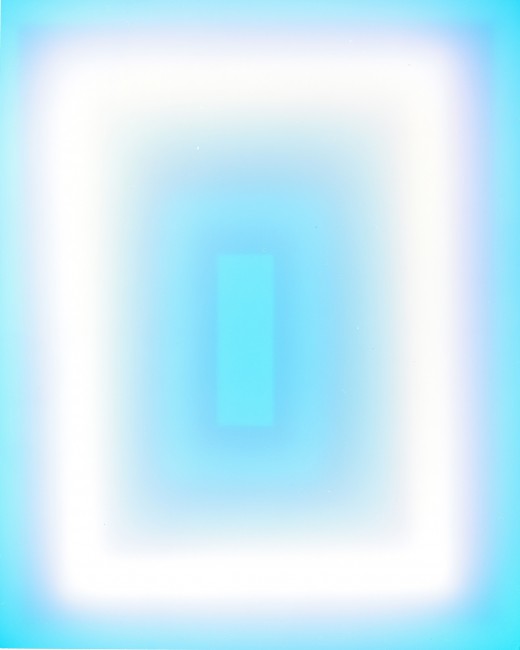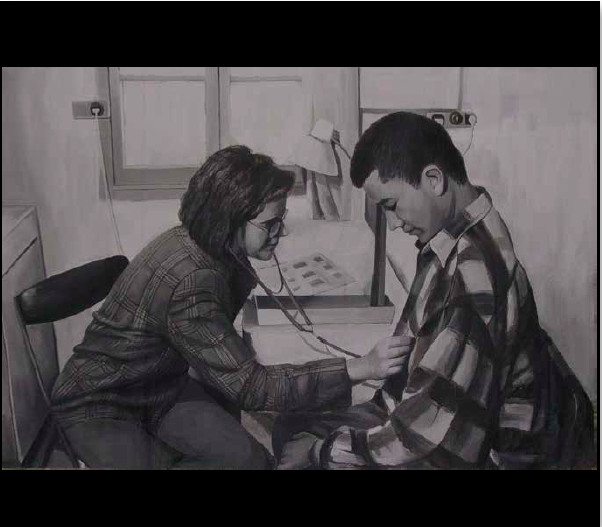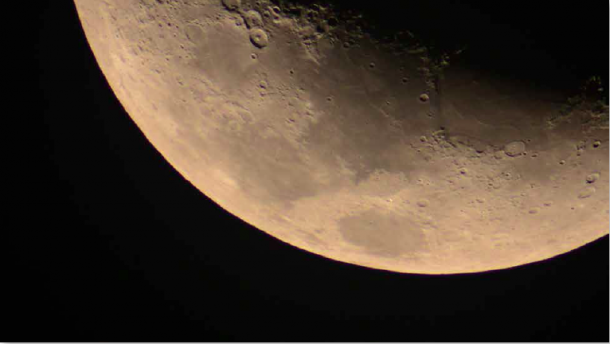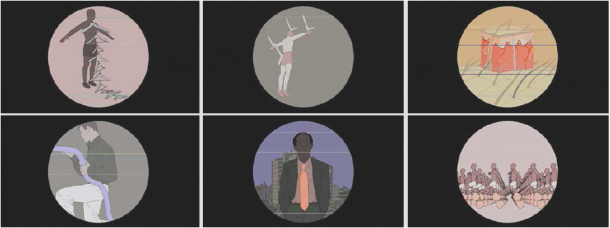SHANGHART BEIJING: V&P
| January 21, 2015
WEB EXCLUSIVE

Courtesy of ShanghArt
ShanghArt Beijing’s latest group exhibition, “V&P,” is ambitious in scale and content, juxtaposing still with time-based works, established with emerging artists, and realism with fantasy. Because the exhibition, whose title stands for “video and photography,” features over a dozen artists and 20-plus artworks, it runs the risk of being a cursory overview of the medium. Fortunately, this turns out not to be the case: “V&P” explores the history of contemporary photography and video art in China while simultaneously pushing the boundaries of their fragile definitions. As a result, many works in the show have been selected for their material hybridity: Shao Yi and Jiang Pengyi “paint” by manipulating inkjet print tones and light, Wang Youshen combines photography and collage with installation, and artist duo Birdhead layers wooden picture frames and traditional Chinese ornamental fabric with “badly taken” photos that would otherwise be discarded.

Archival inkjet print mounted on aluminum panel and acrylic glass
188.5×148.5×4 cm
Courtesy of ShanghArt

Photography installation, dimensions variable
Courtesy of ShanghArt
Additionally, the curation of “V&P” is a fairly experimental way of displaying two-dimensional work, especially film. Although in recent years, artists such as Yang Fudong and Rongrong & inri have treated the flat screen or photograph as a sculptural unit, tilting and arranging it to manipulate space as well as time, this practice remains idiosyncratic. In “V&P,” spatial and material decisions are also curatorial: canonical works such as Zhou Tiehai’s 35mm film Will/We Must (1996) and Zhu Jia’s Never Take Off (2002) are shown on old-school television sets, which, in a contemporary context, have become sculptural objects in their own right. While many of the television sets are placed directly on the floor, other works require the viewer to crane their necks upward: Liang Yue’s Moon, a barely-visibly moving closeup of the moon’s surface, dangles from the ceiling, facing Huang Kui’s “Thousand World” lightbox series, which distorts an aerial view of interior space through a fisheye lens. In this sense, the curatorial decisions in “V&P” are expansions of the artists’ original intensions, responding to and reflecting on both content and style.

Single-Channel video, 9 min, 17 sec
Courtesy of ShanghArt

Single-Channel Video, 20 min
Courtesy of ShanghArt
Worthy of its own recognition is the experimental animation in the exhibition: although unexpected in a show emphasizing the photographic image, these works add an element of fantasy to an exhibition otherwise grounded in realism. Hu Jieming, whose practice usually falls under the umbrella of “new media,” treats western art history as a literal “window,” in which animated screens are the windowpanes. Tang Maohong’s On The Way also replaces glass with screens, this time in the form of a traffic light: Tang uses the circular screens to tell a surreal and dystopian steampunk-style narrative, the animations themselves alternating according to the traffic light’s stop-and-go signals. Finally, Sun Xun’s The Clown’s Revolution is a roller coaster ride through media: black and white etchings reminiscent of Kentridge superimposed with stop-motion animation, watercolor, collage, ink, and shadow puppetry. Phrases such as “We live in freedom but we don’t know” bring us back to the work’s title, but everything here is firmly rooted in allegory rather than historical fact. As Susan Sontag writes, “Photographed images do not seem to be statements about the world so much as pieces of it, miniatures of reality.”[1] “V&P” expands traditional notions of photography and video, and its animations, like the rest of the show, situate themselves in the gray zone between the world as seen and the world as interpreted.

Multi-channel animation, 8 min, 28 sec
Courtesy of ShanghArt
“V&P” is at ShanghArt Beijing from December 20, 2014- February 26, 2015
Artists include: Birdhead, Chen Xiaoyun, Geng Jianyi, Hu Jieming, Huang Kui, Jiang Pengyi, Lu Chunsheng, Li Pinghu, Li Ran, Liang Shaoji, Liang Yue, Shi Qing, Sun Xun, Shi Yong, Shao Yi, Tang Maohong, Wang Yuyang, Wang Youshen, Xiang Liqing, Xu Zhen, Yang Fudong, Yang Zhenzhong, Zhang Ding, Zhu Jia, Zhang Qing, and Zhou Tiehai

